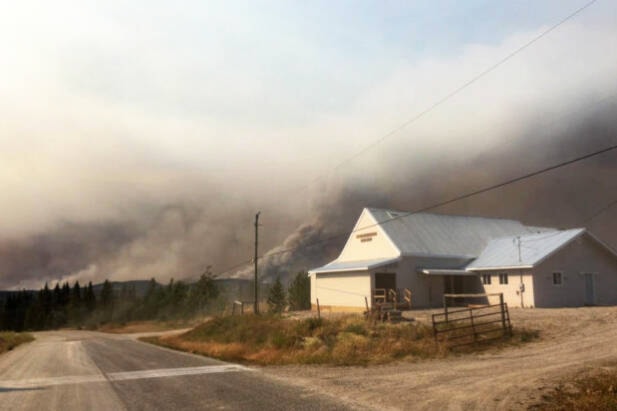Chinook Community Forest General Manager Ken Nielsen, along with Forest Enhancement Society of B.C. (FESBC) Operations Manager Gord Pratt attended both a committee meeting for the Regional District of Bulkley-Nechako, and a Village of Burns Lake town council meeting to provide an update on a salvaging project that has been in the works since 2019.
FESBC has funded 269 forest rehabilitation projects across the province recently, including 25 in the region.
Chinook Community Forest saw 10,000 hectares of its timber harvesting land base (THLB) consumed by the Verdun fire and other wildfires in 2018. The lost timber was roughly 15 per cent of the total 64,000 hectares of THLB in their license. In 2019, FESBC teamed up with Chinook Comfor to provide them funding of $300,000 for salvaging of the burnt timber.
To date, Chinook Comfor has salvaged approximately 100 hectares of the burnt timber from the 2018 fires within the area of the Verdun fire on Chicken Creek Hill.
With the funding from FESBC, they have salvaged roughly 5,000 cubic meters of saw log, 2,025 metric tonnes of bio fibre to that went to Pinnacle Pellet, as well as 1,000 cubic metres of fence post fibre that went to a local contractor. Ootsa Lake Logging was the contractor used to salvage the area. The salvage area will be planted in the spring of 2022, with approximately 120,000 seedlings of a mix of spruce, pine and fur.
In 2021, Chinook received another $500,000 to salvage 150 more hectares, this time within the area of the 2018 Nadina fire. According to Nielsen, this project will be completed during the winter and spring season.
A a result from the first round of funding, three months worth of work were created for jobs such as amending block border boundaries, harvesting, trucking and tree planting.
Pratt also said that the project injected $600,000 into the local community through jobs, and $33,ooo went back to the crown, and that the outcome of the salvaging project has been economic and environmental benefits with an added social aspect.
Have a story tip? Email:
Eddie Huband
Multimedia Reporter
eddie.huband@ldnews.net
Like us on Facebook and follow us on Twitter.
